To write a song, do you start with the music or the lyrics? What chord wheel do I use? Do I need to know music? The answer to all these questions is that there is no answer, because there are literally infinite ways to create music, and even each musical style has its own.
As a composer, you will have to choose the method to write a song that best suits your needs, or try several until you discover which one works best for you. The important thing is to be able to avoid the syndrome of the empty page or empty DAW grids in the face of thousands of possibilities.
In this guide I will teach you the 4 steps of my songwriting method, and how I help my brain to free itself from blocks to compose songs when I need it. This will be the road map to follow to compose your first great success! Although before we start let me tear down some myths.
Muses don’t exist, and inspiration is overrated
Recent brain studies have shown that learning and memory, both located in the hippocampus region, are intrinsically connected to creativity.
It was the Greeks who, searching for the origin of creativity, created the concept of «The Muses». But no, the muses do not exist. Although it is true that certain people, situations or circumstances seem to act as catalysts for creativity.
Learning music does not make you less creative, but on the contrary
How many times people have told me in the studio something like: «I don’t study music because then my flow would go away.». Amazing! hahaha… Luckily science has already shown that the more you learn, the more capacity a person has to be creative.
To write a song, our brain just organizes and combines everything we have learned and saved, and then responds with an original idea. Therefore, learn music and its rules, learn to play an instrument, and listen to all the music you can every day to be a better composer.
Summary
There are infinite ways to write a song, although having basic knowledge of an instrument and following a correct methodology will make you achieve it faster. But yes, anyone can write a song, and without the help of a muse because they don’t exist. Science has shown that learning and memory are intrinsically connected with creativity, and the more music we listen to and the more knowledge we acquire, the more and better music we write.

STEP 1
Find ideas to create the song
In this first step we will see the way in which professionals help our brain to make more and better ideas to write songs, and that you can also use to create melodies and chords and write a song.
Every song starts with a first idea, which usually comes when it feels like it and doesn’t wait for it, or so it seems. And is that how many great choruses have been composed in the bathroom? hahaha… But why does it happen this way? And above all… How to make it happen and my brain fill with thousands of ideas?
Well, the answer is found in science, and it is something that professionals have been doing to write songs all our lives and without knowing it, as is my case.
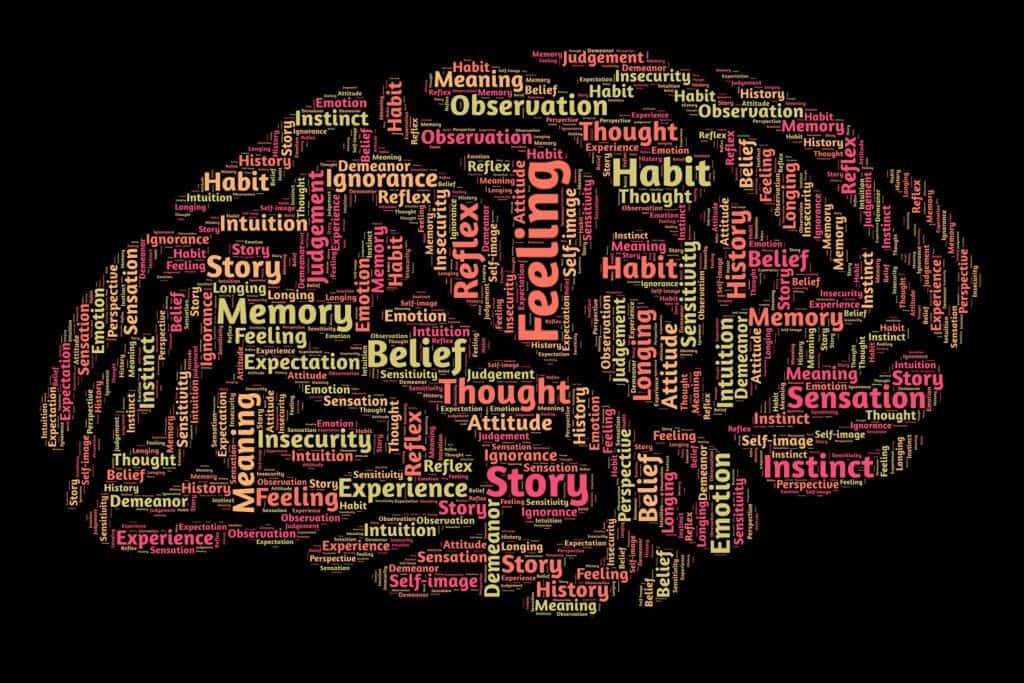
How the brain works to create ideas
Our brain solves problems by accessing our long-term memory to collect data. It takes a while for our brain to do this, and because of that, great ideas seem to pop up when they feel like it. But the ideas appear just when our brain has finished searching and processing the data, and throws the solution at us.
This first idea can be anything that helps us to write a song, a guitar riff, a catchy phrase for the chorus, a melody, a hook or a rap beat. But how to encourage these ideas to reach us? Well, helping our brain to generate them. He will do it alone and for free !!
How to help our brain to compose songs according to science
According to neuroscience, the creative process goes through 4 phases: Preparation, incubation, lighting and verification.
To help your brain generate ideas to write songs, follow these steps:
1Preparation
Start by brainstorming. Just sit down at the piano or pick up the guitar, and start trying chord wheels, listen to other artists’ songs and get ideas, start singing melodies, or build a primary beat or rhythm to start working on.
Don’t try to judge what you get, don’t worry about using certain chords or wheels, or creating the chorus or verses already. Just drop whatever comes to mind and let yourself go. Use your imagination without hindrance, and let your neurons move free like the wind.
As you may have seen, I do not speak in words, although the message is for me the most important part of a song. But I’m a musician, and my starting point when I want to write a song is always melody and harmony. Although before I start to ramble, I do think about the artist who is going to sing it, his age, and a good story to tell that motivates me.
Most of the Pop songs in history only use 4 chords that come off the major scale.
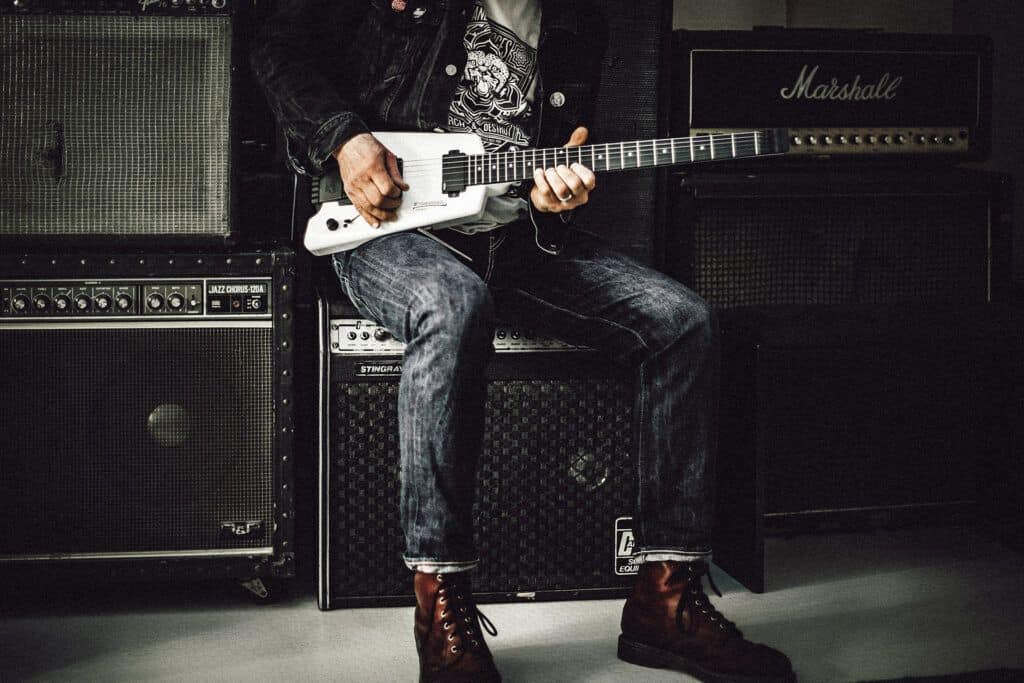
Get inspired by leaning on some of the most common chord wheels that have been used in Pop throughout the ages, and that are still being used, and that come out of the major scale: C, D, E, F, G, A, B, whose basic triads are: C major, D minor, E minor, F major, G major, A minor and B diminished.
Although there are infinite possibilities for chord wheels, most popular songs can be played with only four that come out of said scale, those corresponding to the 1st, 4th and 5th degrees of the same, sometimes accompanied by the 2nd and 6th grade. Here are some typical wheels in C Major:
By the way… Normally the chord wheel of the verse is not the same as the chorus, which is usually simpler, for example:
Verse: C Major / A minor / F Major / G7 (1-6-4-5)
Chorus: C Major / F Major / G Major (1-4-5)
2Incubation
When you’ve tried enough ideas, it’s time to stop and disconnect. Go out for a walk or exercise, surf the internet, play games, sleep if it’s too late, or cook, whatever you like the most, but stop!
Your brain needs mental freedom to prepare the creative ground, reorganizing the information, synthesizing it, associating it with other previous data, to establish more complex relationships that lead to great musical ideas.
Of course, the previous steps can be done days before you start writing, in fact it is what I do. When they commission me a job, I spend several days before listening and sketching ideas, and recording everything that comes to mind on my mobile, just in case.
3Lighting (the muse)
If you do what I tell you, it will seem incredible but it works! And before you think you’ll be saying “Eureka”, or rather… yeahyeahoohyeah, OohOohUuhOoh, hehe. This is the true moment of creative inspiration, the moment of the muses of the ancient Greeks.
But of course, these ideas will arrive in an overwhelming way and will catch you anywhere. So if you don’t have a guitar nearby, have your mobile handy and record them, or take a piece of paper and write it down if it’s a lyric, because ideas just as they come, go and don’t come back, as if they were a good dream.
4Verification
We still have one last step in this process, that of confronting ideas with harsh reality. It may be that the new ideas do not fit the type of song you need, or the artist you are writing for. That is why in the next step you will have to analyze them and if they are not worth it, save them! to use in another song.
And of course trust your brain, because once you have it trained, you will not stop generating new ideas every day, and better and better to write new songs.
Summary
Songs always start with an idea generated by our brain. For it to generate them, we must train it and provide it with sufficient stimuli. After a pause to rest, the brain will take care of ordering, synthesizing and processing these stimuli, and returning them to us in the form of great musical ideas. In this step, we only deal with generating ideas, without assessing whether or not they are valid for the project, artist or type of theme that we want to write.

STEP 2
Decide on the musical genre, key, time signature, and tempo of the song
In this second step we will decide the musical style that we want to give to our first song, as well as we will look for the best key to be able to sing it, the beat, and the correct tempo, something very important in styles such as electronic music.
Now is the time to order the ideas generated in the previous step, and analyze if they fit the musical style and tempo you need to write a song, and check that the tessitura is executable by the artist for whom you are composing it.
For now we will concentrate on the melody of the song, the instrumental parts and the hooks, but not on the harmony, since the same melody can be harmonized and enriched in a thousand different ways later. But nothing prevents you from testing the melody with the chords if you know music, of course.
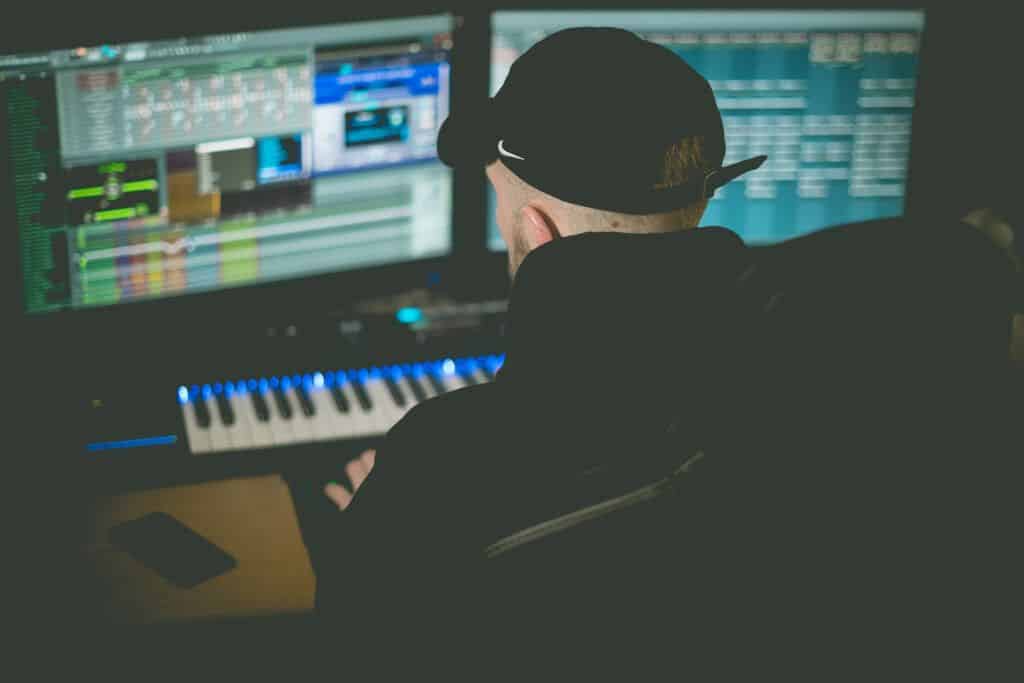
1Musical genre
The musical genre is the first thing to consider when writing a song. Not all melodies fit all styles, and in fact, it is good to try in the first step to generate ideas based on that style, relying on rhythms, chord wheels, or themes from other artists as a reference.
Program a single beat or drum loop in that style, and try singing those tunes over it. If they fit, mark them! Go adding ideas without thinking about which one you will use in the chorus or which one in the verse. Although many times you will see it so clearly, that you can skip steps without any problem.
2Key
It’s also quite important the key when you write a song, especially if it is not instrumental music, although even if it is electronic music it can be as well. Not all keys sound equally round, or powerful, it is a matter of frequencies and hertzs.
If you want to write an electronic music song, listen to hits by other artists and decide which of them you want to resemble, or which of them sounds better to you, and see what key is the song you like.
But if the tosongic is for a singer, the ideal is to be able to try it with him or her, or with another person of the same sex, who could be yourself.
Human voice tessitura
Here you can see the tessitura of the human voice.

For reference, a guy, either a tenor or a baritone, can comfortably sing between an La2 and an E4, but from there, you should be sure that he can reach higher notes. Typically, it can go well up to A4, and even higher notes in what is known as «Falseto Voice».
The girls can sing comfortably from a G3 to G5, but higher or lower, you should watch the moment to use these notes. Of course a professional can with her chest voice sing beyond a Bb5, and even more, like Celine Dion who goes up to an E6.
But unless it is an Opera, never go beyond a Bb5 or C6, because from there, either the girl will sound like a cat, or she will have to change to her lyrical voice from D6-Eb6, and it might not be what you are looking for.
3Tempo and meter
If you want to write a song that adapts to the context of current music, that is, you are not writing for the mere pleasure of doing it, or you are making a love song for your girlfriend, choosing the tempo and time signature of the song is crucial.
Something that changes from time to time is the tempo, and in styles like electronic music, if you don’t build your song in the tempo that is played at all times, you won’t have any chance of anyone playing or radioing it.
Regarding the beat, I would bet that 95% of the Pop songs in history have been composed in 4/4 measure. But if yours is a waltz, you will have to choose 3/4, if it is a march band a 2/4, or if yours is rock from the 50s choose a 12/8.
2Check off ideas that match the steps above
As we see what ideas fit the style, key and tempo of the theme, we will mark and save them, and when you finish with them, we will move on to the next step.
Don’t worry if we need new ideas for other parts later, sometimes the songs don’t come out completely at once. For now we will configure our draft with what we have in the next step. Although the normal thing is that if we have done the previous steps well, we not only have ideas to write a song, but to write the 10 songs of a complete album!
Summary
In this step we will take care of analyzing and confronting our ideas with reality. We will see if these match the musical style that we have chosen, and the tempo that is used at that moment in other commercial themes, and also if they are in the correct tone for the artist we want to interpret it.

STEP 3
Define song’s structure
In this third step we will test different structures for our theme to see which one works best. But first, we will see what are the essential parts in a song, and what each of them are for. Once the structure is chosen, our song will be almost ready, or in the absence of only the lyrics, if it is not an instrumental song.
The time has come to fit all the pieces into a structure, and this is another of the things that have also changed over time when writing a song.
In the 1950s, many songs consisted of a single part or A, such as Louis Armstrong’s «What a Wonderfull World», and others of just two, an A and a B, such as Frank Sinatra’s «My Way».
Later, the songs began to have 3 to 5 different parts, Introduction, Verse, Chorus, Bridge and Coda, which have now been joined by others such as: Pre-Chorus, Drop, Break Down or Hook. But what is this of Verse and Chorus? How are these parts distributed? and How to choose the best structure to write a song?
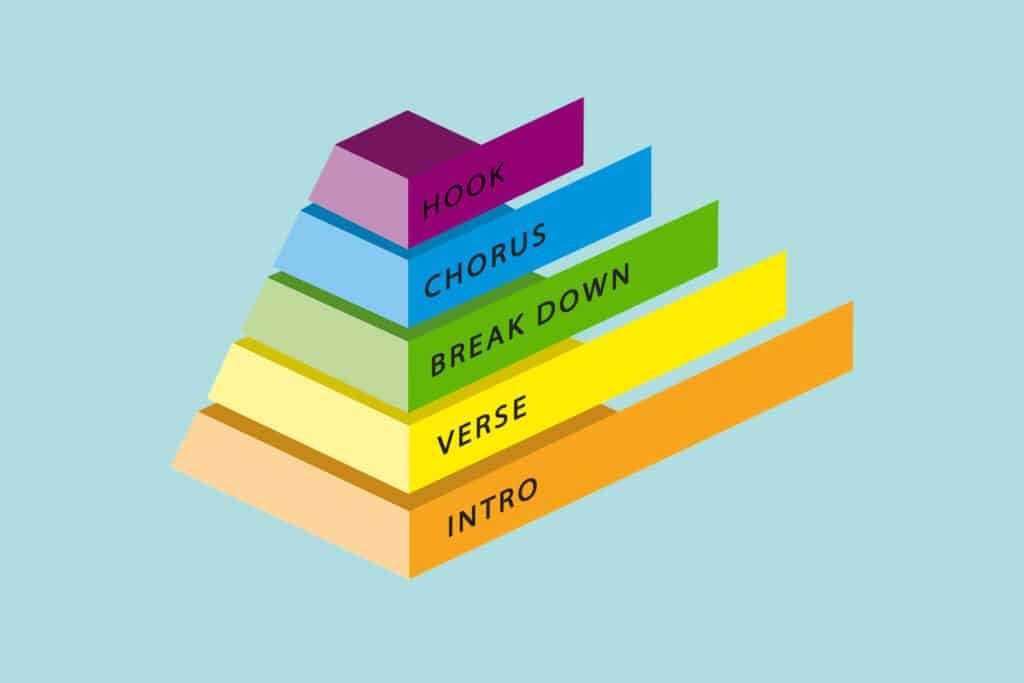
Parts of a song
These are the parts you need to know to compose a song, and that every song has been written since the mid-20th century. I have ordered them in order of appearance or position in the songs.
Introduction or Intro
The intro presents the theme and gives you clues about its style, key, tempo, and instrumentation. It was always that recognizable guitar riff, violin melody, or first piano chords that the radio host took the opportunity to talk about. Nowadays it is sometimes a mere sound effect or is even omitted, and the song begins with another part of the song.
Verse, (Verse) or part A
Regarding the lyrics, The verse is where the first question to be resolved in the chorus is presented. Also where the story is located or begins to unfold, or the characters or feelings are described. Each verse is different, and it always expands on the story or raises new questions.
In relation to music, all the verses are usually the same with slight variations. But while the first verse tends to be somewhat more bare with respect to its musical arrangement, for example, using only a piano, the second or third verses usually maintain the energy of the chorus but with fewer elements, so that when it reaches it the energy increases.
Pre-Chorus or (Pre-Chorus)
The Pre-Chorus is a very short part, of few bars, that connects the verse with the chorus. Its function is to relax the tension a bit to create a more powerful transition to the chorus, and this has much more impact.
Break Down or (break)
The break-down, is a part that is characterized by the sudden drop in rhythm and other instruments that leave the song practically naked. It is typical of electronic music, although it is also used in Pop.
Sometimes it is used as a resource in a first chorus before the Hook, something also typical of electronic music. The break downs make the chorus or Hook that follows them much more impactful.
Chorus or (part B)
The chorus is the most important and well-known part of the songs, the catchiest or catchy part that is burned into the listener, and shines above the others. It represents the climax of the song, and usually has the same repeating lyrics every time it appears.
It represents the climax of the song, and usually has the same repeating lyrics every time it appears. Although in many of the current songs the chorus is so simple, that responding does not respond to anything, and is rather the simplest phrase of the whole song, but it works!
Musical bridge
The musical bridge is a resource that is used in light or more classical music, to connect in a natural way the first chorus with the second verse. Sometimes he repeats the melody of the chorus with the strings, or uses a recurring motif as a hook, but in any case, he releases the energy of the theme to fall into the verse.
Hook or (Riff)
The hook or riff is a short musical phrase, often synthesizer or guitar, or a catchy vocal chorus or melody, that makes the song attractive and you will remember it forever.
This new part where the hook appears, and from which it borrows its name, usually maintains the same energy of the chorus or even more, as in electronic music, which is where the theme really explodes instead of in the chorus.
It is not a resource or new part and has been widely used in Rock. Do you remember the hook on «Satisfaction» by the Rolling Stones? Surely yes! Well, that guitar of the intro that repeats and repeats is the hook, and that is used in the song as a musical bridge.
Drop
This part is specific to electronic music (dance, house, etc…), and is a point in the song where there is a radical change in the rhythm or bass line, which is usually preceded by another section called «Build-Up »Where the instruments are gradually accumulated until the total climax, and of a cut or Abrupt break that gives way.
It is usually used as a chorus before the Hook, or as a Pre-chorus before a vocal chorus, but also sometimes as the main part of the song.
Solo or Orchestra
It is a part already in disuse but that you have heard millions of times in rock music, with its famous and hummed guitar solos. But also in light music, classical, boleros, etc. It is that typical moment in which the string or brass section of the orchestra repeats the melody of the chorus as a solo, before the last chorus.
Bridge, (part C) or (Middle 8)
The bridge represents a total change in the groove of the song. Its function is to make the last chorus, which at this point can be repetitive, regain new strength and be fresh again. It is also known as Part C, from when the songs only had Verse and Chorus, or Parts A and B.
Its melody, chords and rhythm are usually different, and in many songs it is used for what is known as modulating or changing the tone, so that the voice of the artists shines even more in the last or last refrains.
Outro or (Coda)
The outro is the farewell and closing of the song, and it can take a thousand forms. In the 80s the outro were repeated refrains that gradually disappeared in what was known as Fade out, and years before they were only 2-4 bars with a long note from the singer, or an instrumental ending from the orchestra.
But today it can be a sharp cut or bang, a last turn to the intro, or even a new vocal or chorus part with a totally different groove.
Most common structures to write a song
The most used structure to write a song is the typical structure of Pop songs:
IntroVerseChorusVerseChorusBridgeChorusChorus
The number of measures in each part is usually 8, and in any case multiples of 4. This rule is rarely broken, and if you do, you will quickly notice that something strange happens that does not add up. And if you don’t notice it, make yourself look at it, hahaha
Other very common structures used in Pop today are:
VersePre-ChorusChorusVersePre-ChorusChorusBridgeChorusChorus
VerseChorusVerseChorusChorusBridgeChorusChorus
IntroVerseChorusVerseChorusBridgeChorus
Or start directly with all the energy of the chorus with this other structure:
ChorusVerseChorusVerseChorusBridgeChorus
These structures are more typical of electronic music, although current Pop sometimes borrows parts:
VerseChorusHookVerseChorusHookHook
IntroVerseBuild UpChorusHookVerseBuild UpChorusHookHook
Other classic structures that we can find in rock:
VerseChorusVerseChorusSoloChorus
HookVersePre-ChorusChorusVersePre-ChorusChorusSoloChorusChorus
More classical and typical structure of classical music
IntroVerseChorusMusical BridgeVerseChorusBridgeChorusChorus
How to start assembling our theme using a structure
The best way to start composing a song is to structure our ideas to create the chorus and verses first, and only then move on to the rest.
Try not to prejudge the type of structure, and experiment with more than one of them until you find one that really works for you, that is, take a risk and do not go directly to the one you always use.
Once you have your structure, start to introduce rhythmic elements, if you have not already done so, using a greater rhythmic load in the refrains than in the verses, and leaving the first verse as unloaded as possible, so that the chorus has a full impact the first time it appears.
From there, and depending on your musical knowledge, you can try to cover the song something else or make a musical arrangement, or you can contact a professional arranger to do it for you, or with a music producer who takes it to a more professional level in order to present it to a record company or publisher.
Summary
In this step we will take care of analyzing and confronting our ideas with reality. We will see if these match the musical style that we have chosen, and the tempo that is used at that moment in other commercial themes, and also if they are in the correct tone for the artist we want to sing it.

STEP 4
Write the lyrics
In this last step we will define the story we want to tell in our song, and we will write the lyrics following some basic rules, although there is a lot of flexibility in things like rhyme. So relax… You are about to finish your first song !.
This step, which is the first for any lyricist or singer-songwriter, is for musicians like me the last step to compose a song. Although the lyrics are not something secondary to me at all, but just as important or more than the music itself.
However, before I start singing, I am clear about what kind of story I am going to tell, of course, because it is not the same to compose the melody of a ballad of heartbreak, than that of a happy theme for the summer. But I always start with the music and leave the lyrics for last.
There is no correct way to start writing the lyrics, or how to do it, and sometimes a song suggests its own. But in my case, I start by writing a short text with questions and answers that define my story. But before this, the first thing I look for and write on my blank sheet is always: the Title.
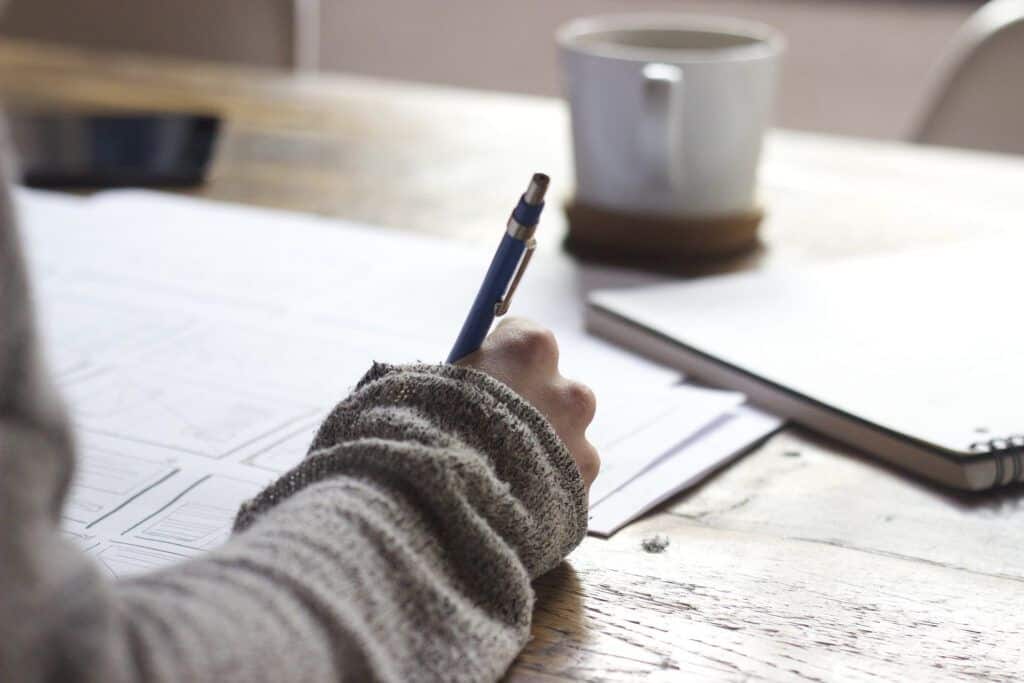
Choose the title of our song
Choosing the title of the song is something important to me. It is the seed that catalyzes the development of the story in my case, and I always look for it to be a phrase or word that captures the meaning of the song. Many times by the way, this phrase or word ends up being the most catchy or repeated of the chorus.
The best way to create a title for your song is to brainstorm or BrainStorming again, and think in phrases or words, always from the perspective of the person who sings, trying to condense in a few words how the theme could be expressed or Leit Motiv of the song.
But if it doesn’t come out, don’t worry, the title is something that you can always choose at the end, and create a provisional one just to inspire you and change it later when you finish the song.
How to create a story for our lyrics
A quick way to create a story is by using one of the oldest methods in journalism, answering the famous 5W:
- (Who) sings the song or who is it addressed to?
- (What) is he trying to say, or what is the story about?
- (When) do you sing it? Did what happened happen, is it happening, or is it going to happen?
- (Where) is it in this present moment, near or far?
- (Why) do you sing it, out of spite, why are you happy for him or her?
How to write the lyrics of a song
With the title and a story to tell, try to summarize it in a short text. It is about going from less to more, without trying to focus directly on writing the lyrics in detail.
The easiest way to approach the story is dividing it into 4 parts as if it were a movie script, which in case you haven’t already guessed, then it will be our two verses, chorus and bridge.
Pay special attention to the hook or catchiest phrase in the lyrics, the one that repeats and repeats and could be the title itself. You will need to place it in at least two different places in the chorus. Normal positions for the hook are: Lines 1 and 5 or Lines 4 and 8 but it also works on lines 1, 3 and 7-8.
1Main Purpose of the Story – Chorus
It is the end of the film, the answer to everything that the story tells and the main reason that moves the person who sings the song. For example; «Waiting for the love of my life,» «Happy to have found you», or «I can’t be happy since you left me».
2Two different plots based on the ultimate purpose – Verses
Every movie has 2 different plots, sometimes more, that are resolved as the story progresses. A letter is the same, and we must try to find 2 moments, questions or situations, for which the chorus offers a solution.
For example, being in love and then out of love, or before you were one way and now you are another, or I had been sad for many months because of your absence but I have been able to overcome it.
3Change or Revelation – Bridge
In all films there is a moment in which the story turns upside down, which makes the main character succeed, or the main couple can finally be joined, etc… This moment of revelation or turn of events in a lyrics is the bridge. The story can now end, or the problem now has a solution.
For example; «I’ve already found the strength I didn’t have to run away from you» or «Now is your time, you just have to do what you already know you have to do».
Rhythm and rhyme of phrases
Most of the lyrics of the songs rhyme, although some do not, as it happens in many Pop lyrics of recent years. Rhyming improves the rhythm and development of the song, while making it easier for the lyrics to be better recorded in the listener’s mind.
Here are some of the most common types of rhyme used to compose the lyrics of a song:
- Rhyme every other line as in the bolero «Esta tarde vi llover» de Armando Manzanero.
- Rhyme all the lines like the chorus of «Despacito» by Luis Fonsi.
- Rhyme in pairs as in «The Sound of Silence» by Simon and Garfunkel.
- Not rhyming at all, not very common in Spanish lyrics, but in many English lyrics.
- Use all of the above at the same time as in «La Chica de Ayer» by Nacha Pop, where all the lines rhyme in the first verse, in the chorus they rhyme every other, and in the second verse they rhyme in pairs.
As you can see, there is no written rule to write the lyrics of a song, no better or worse way to rhyme phrases, you may not even rhyme at all. However, the normal thing is to do it or at least have some individual phrases that do, to maintain a better rhythm and narrative development.
Summary
To write the lyrics of your song, start by choosing a title that inspires you, and then use the old 5W method to create your story. He begins to create the phrases, and begins by placing the hook or catchiest phrase of the chorus, and then the verses and then the bridge. When it comes to rhyming there are no rules, but try to rhyme at least part of the sentences to enhance the narrative rhythm.
Conclusion
So far this guide on how to compose a song. It is a proven method that I have followed for over 30 years as professional song writter, to write songs for some great artists.
Curiously, I have always tried to listen to and analyze the artist and his work beforehand to be able to write something taylored for him, without knowing that by doing so, I was favoring the creativity of my brain, according to what was discovered by neuroscience.
So jump into writing and creating a lot of music, because writing songs, like everything in life, you only learn by writing. And by the way, if your thing is music you can follow my method step by step in order, but if you are a lyricist, just change the order and start with step 4.
The fundamental thing is to lose the fear of writing, and give our brain the freedom to create, although to do it better, it will be good for you to play an instrument and know something about music.
And then you just have to record the song on your phone, digital recorder or DAW, depending on the media you have available. In next posts I will deal with this topic in more depth. And of course, if you need to rent a recording studio in Barcelona, we can help you with that recording.
Anyway, if after following my method you have not been able to write your first song, check the following tips to help you see what might go wrong:
- Have you gotten stuck in the chorus and can’t think of the verse? Try the rhythm of a verse of another song, and try to inspire yourself, or think about collaborating with another person.
- Is the song too tight for you and you can’t sing it? You’ll have to lower the key down. Composing in C major is fine and it is an easy clef on the piano, you just have to play the white notes. But if your melody is high for you, you will have to use a different key. Some pianos allow transposition, and so do 100% of midi and notation software.
- Do you feel that the song does not work, or the chorus does not finish impacting? Go back to step 3 and try a different structure, or try adding a new part like a pre-chorus or a break down, to make the chorus impact more.
- Do you find the chords in your verse or chorus a bit limited? Learn or introduce new chords, or add extensions like add9 or sus4 to the ones you already use to add color.

